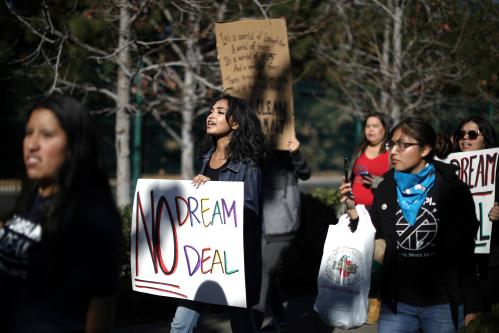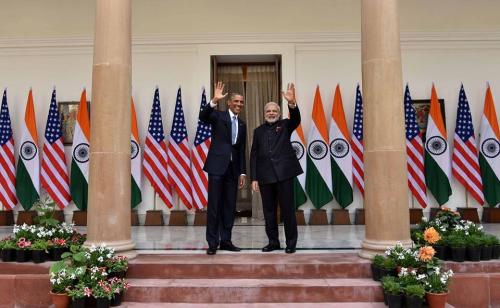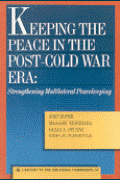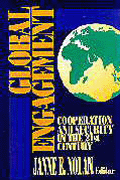Content from the Brookings Institution India Center is now archived. After seven years of an impactful partnership, as of September 11, 2020, Brookings India is now the Centre for Social and Economic Progress, an independent public policy institution based in India.
This article first appeared in Live Mint. The views are of the author(s).
As Donald Trump lunges towards 100 days of his presidency with the elegance of a raging bull in a china shop strewn with nuclear trip wires, he has notched up several dubious “firsts” in this brief period: the first to lose a hand-picked national security adviser to scandal in a mere 24 days; the first to have his executive orders be quashed by the courts; the first to backtrack on his stated foreign policy agenda vis-a-vis Syria, Russia, China and the North Atlantic Treaty Organization (Nato); and the first White House incumbent to have higher disapproval ratings (of nearly 60%) than approval ratings (of 37%) since Gallup started tracking this issue in 1945.
Similarly, a Pew Research Center poll reveals that a majority of Americans believe Trump is too impulsive in making decisions (63%) and that his policies have put the US in a weaker position internationally (45%). Trump’s approval rating is at least 15% lower than the previous lowest incumbent—Bill Clinton. While Clinton rued early in his presidency that he did not get a honeymoon period, Trump appears to have entirely skipped the honeymoon and gone straight to divorce proceedings.
Unsurprisingly then, even headlines of analysis by die-hard Republican experts warned that “The Trump administration is heading for a 100-day train wreck”. Commentaries by liberal and Democratic observers were predictably scathing and spoke of “100 days of horror”.
These articles reflect, on the one hand, dismay at the rejection of the ideal of the US as the leader of the free world, which can be traced back to World War I, and on the other, anger at the betrayal of the isolationist promise made by Trump. At his inauguration on 20 January, Trump gladly donned the mantle of disrupter-in-chief and promised an “America First” policy, which was expected to dramatically bring the US back to the traditional isolationist roots that have dominated its foreign policy for the longest period of its 240-year history. Consequently, he challenged the US-led world order, called for closer and friendlier ties with Russia, vowed to destroy the Islamic State in cooperation with Syria, declared his intention to label China as a currency manipulator and dismissed Nato as “obsolete”.
To read more, please click here.









Commentary
Op-edDonald Trump’s tumultuous 100 days
April 24, 2017